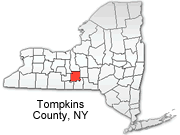Supporting LGBT Youth
Lesbian, Gay, Bisexual and Transgender (LGBT) Pride Month is celebrated each year in June. Researchers from the Family Acceptance Project found that adolescents self-identified as lesbian, gay or bisexual, on average, at age 13.4. And increasingly, parents and families report children identifying as gay even earlier – between ages 7 and 12.
Research has also shown that parents and caregivers play a critical role in their LGBT children’s health and well-being. Each family brings different dynamics, experiences, and strengths to learning that their child is lesbian, gay, bisexual, or transgender. Some families can quickly learn to support their LGBT children. Some were accepting before they knew or perceived that their child was LGBT. Others need individual support to adjust to having a gay or transgender child. Some need counseling, and others may need family therapy.
Research with LGBT youth and families, foster families, and caregivers has identified more than 100 specific ways that parents and caregivers express acceptance (or rejection) of their LGBT children. Many family accepting behaviors are related to better overall health, higher self-esteem and significantly lower levels of depression, suicidal behavior, and substance abuse. These include a range of behaviors such as:
· Supporting their child’s gender expression
· Welcoming their child’s LGBT friends to family events and activities
· Connecting their child to positive role models to show them options for the future
· Helping their congregation become more welcoming of LGBT people.
The Gay, Lesbian & Straight Education Network (GLSEN) conducts a biannual national school climate survey of LGBT secondary students; the survey has shown that 8 out of 10 LGBT students experienced harassment at school in the past year because of their sexual orientation, 6 out of 10 felt unsafe at school, and three quarters regularly hear homophobic remarks, such as “faggot” or “dyke,” at school. In addition to the damage it can do to LGBT students, anti-LGBT bias also affects other members of the school community. Anti-LGBT behavior creates a hostile environment and an uncomfortable and unsafe space for everyone.
At school, teachers can have a key part in being allies in supporting LGBT students. For many students, simply knowing that allies exist can be a source of support. Here are a few things teachers can do to be visible allies:
· Support students who come out to you
· Respond to anti-LGBT language and behaviors
· Support student clubs, such as Gay-Straight Alliances
· Teach students to respect others
· Include observations such as Mother’s Day and Father’s Day that affirm all family structures
For more information, visit the Family Acceptance Project, GLSEN, or SAMHSA.
~ ~ ~
Monthly Messages are brought to you by the Tompkins County Youth Services Department, a proud partner of The Community Coalition for Healthy Youth.
If you have further questions or comments about this message or would like information on how to become involved with the Community Coalition for Healthy Youth, please email ahendrix@tompkins-co.org
Thank you in advance for sharing this monthly message with your networks.

